Business
Government surrenders to Google: Peter Menzies

From the MacDonald Laurier Institute
By Peter Menzies
In the short term, this is very good news. The bad news is that $100 million won’t save journalism
Heritage Minister Pascale St. Onge has surrendered to Google and Canadian media have avoided what would have been a catastrophic exclusion from the web giant’s search engine.
In the short term, this is very good news. The bureaucrats at Heritage must have performed many administrative contortions to find the words needed in the Online News Act’s final regulations to satisfy Google, a beast which isn’t easily soothed. In doing so, they have managed to avoid what Google was threatening — to de-index news links from its search engine and other platforms in Canada. Given that Meta had already dropped the carriage of news on Facebook and Instagram in response to the same legislation, Google’s departure would have constituted a kill shot to the industry.
Instead, the news business will get $100 million in Google cash. For this, all its members will now fight like so many pigeons swarming an errant crust of bread.
The agreement will also allow the government, while surrounded by an industry whose reputation and economics have been devastated by this policy debacle, to attempt to declare victory. Signs of that are already evident.
That’s the good news.
The bad news is that while 100 million bucks is nothing to sneeze at, in the grand scheme of things it is a drop in the bucket for an industry in need of at least a billion dollars if it is to recover any sense of stability. Indeed, when News Media Canada first began begging the government to go after Google and Meta for cash, some involved were selling the idea that sort of loot was possible.
This did not turn out to be so.
Instead of the $100,000 per journo cashapalooza that was once hoped for, the final tally will be more like $6,666.00 per ink-stained wretch.
That figure is based on two assumptions. The first is that the government has agreed to satisfy Google’s desire to pay a single sum to a single defined industry “collective” that would then divide the loot on a per-FTE (full-time employee) basis to everyone granted membership in the industry’s bargaining group. Google had made it clear it had no interest in conducting multiple negotiations and exposing itself to endless and costly arbitrations. So, as we have a deal and Google held all the cards, it’s fair to assume it got what it wanted — a single collective with a single agreement and a single cheque.
The outcome, in the end, (and the government will deny this endlessly) is essentially what Google was offering from the outset and what Konrad von Finckenstein and I had recommended in our policy paper for the Macdonald-Laurier Institute — a fund.
Now comes the haggling within the collective: who counts as a journalism FTE? Newsroom editors, photogs, camera operators, graphic artists, illustrators, support staff, and so on?
The second assumption is that this fund will be distributed across about 15,000 media workers nationwide. But whether that number turns out to be 15,000 or 5,000, here’s what really matters:
Such an agreement is likely to bring an end to Google’s existing commercial agreements — at least with those organizations that join the collective. That means the incremental amount of cash coming into the industry once its internal negotiations have been completed could be somewhat less than $100 million. How much less would be pure speculation, but individual agreements certainly exist — with the Star, for example, and also with Postmedia. Or at least they did.
The largest beneficiaries — because they have the most journalists — will almost certainly be the CBC/SRC, Bell Media and Rogers, none of which actually need the money, and that may also convince the Canadian Radio-television and Telecommunications Commission (CRTC) to shake down foreign streamers to subsidize their newsrooms.
Just for reference, Bell Media’s parent company made $10 billion last year.
With 75 per cent of the dollars predicted to go to broadcasters, that leaves those organizations in the most dire financial circumstances — Postmedia and the Toronto Star for example — with about $25 million to fight over. So, the scraps will go to the starving (the Star has suggested it is losing close to a million dollars a week) while the healthy will be even more well fed.
And of course none of this means Meta, which had estimated that on top of the $18 million it provided to Canadian journalism directly via now-cancelled deals, it also once drove more than $200 million in business annually to Canadian news organizations, will get back in the business of carrying news. If we assume that was the case, the final impact of the Online News Act amounts to revenue losses to the nation’s news industry of something north of $100 million, likely closer to $150 million.
It also means that those smaller startup news organizations that may have represented the industry’s best chance to transition to the digital world no longer have access to Facebook or Instagram, which constituted a free platform through which they could launch and market their ventures.
The bottom line is that lobbyists for Canada’s news industry, in concert with the government, launched the Online News Act in the belief it would make the industry better off by as much as $600 million and no less than $230 million. The end result is an industry at least $100 million worse off and with severely reduced access to the eyeballs needed to survive.
Well played, everyone. Well played.
Peter Menzies is a senior fellow with the Macdonald-Laurier Institute, past vice-chair of the CRTC and a former newspaper publisher.
Business
Paying for Trudeau’s EV Gamble: Ottawa Bought Jobs That Disappeared
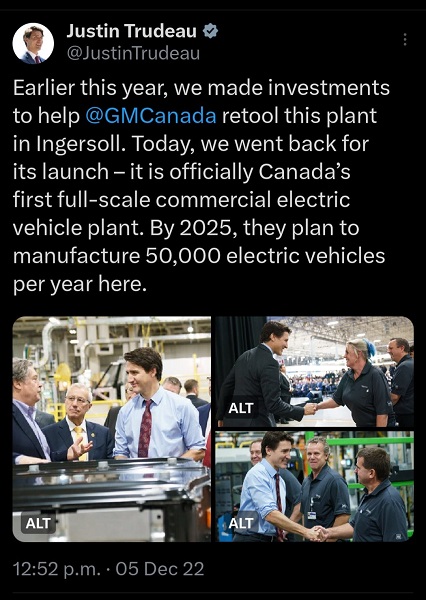
The jobs promised by the thousands never arrived. The debacle of Trudeau’s gamble in the EV sector offers a dire warning about Carney’s plans to “invest” in the economy of the future.
Every age invents new names for old mistakes. Ours calls them investments. Before the Carney government reluctantly unveils its November budget and promises another future paid for in advance, Canadians should remember Ingersoll, one of the last places their leaders tried to buy tomorrow.
In December 2022, Prime Minister Justin Trudeau told Canadians that government backing would help General Motors turn its Ingersoll plant into a beacon of green industry [See image above]. “We made investments to help GM retool this plant,” he wrote online, “and by 2025 it will be producing fifty thousand electric vehicles per year.” [That would mean 137 vehicles each day, or about six vehicles every hour]. It sounded like renewal. Supposedly, this was how the innumerate prime minister was building the economy of the future. In truth, it became an expensive demonstration of how progressive governments love to peddle rampant spending for sound strategy (1)(2).
On the whole, the Trudeau government boasted of having pledged over $50 billion in subsidies to various companies in the EV sector, some of which are failing and most of which are scaling down and exporting production capability to the US. The much-promised benefits have not materialized (3).
The specific Ingersoll plan began with 259 million dollars from Ottawa through the Strategic Innovation Fund and the Net Zero Accelerator. Ontario matched it with another 259 million. The half-billion-plus subsidy financed the plant’s switch from gasoline-powered Equinox production to BrightDrop electric delivery vans. Added to that were the usual incentives: research credits, accelerated write-downs, and energy subsidies. The promise was the mythical creation of thousands of “good middle-class jobs” (4)(5).
At the time, the CAMI Assembly plant employed about two thousand workers. When it closed for retooling in 2022, employment fell to almost none. The reopening in 2023 restored roughly 1,600 across two shifts. A year later, as orders slowed, one shift was cut and employment fell to about 1,300. By early 2025, layoffs cut the number to around eight hundred, and by October that year, when GM confirmed the end of BrightDrop production, fewer than seven hundred remained. The workforce had collapsed by nearly two-thirds from its pre-electric-vehicle conversion level. In statistical terms, two of the three employees the PM used for the photo-op in Ingersoll three years ago are unemployed today. That’s some economic performance.
The numbers expose the illusion. With 518 million dollars in public funds and only about 3,500 vans built in 2024, taxpayers paid about 148 thousand dollars for each vehicle GM produced. Counting only the federal contribution still yields $74,000 per van. Divided by the remaining jobs, the subsidy works out to more than half a million dollars per worker. The arithmetic refutes the fantasy of Prime Minister Trudeau’s speeches (10).
We are in 2025. Today is the future the Liberals promised the country. Neither Ottawa nor Queen’s Park will dwell on the above-stated facts today. When Crown Royal closed a plant in 2024, Premier Ford posed before the cameras and dumped a bottle of whisky to protest lost jobs. Now that a multinational massively subsidized by his own government has cut its workforce in Ingersoll by two-thirds, he will not torch a van or denounce General Motors from the front steps of Queen’s Park. It is easier to rage at private enterprise than to admit one’s own complicity (11).
The failure in Ingersoll was entirely predictable. Government enthusiasm outran commercial sense. The BrightDrop vans entered a market already filled by cheaper competitors in the United States and Asia. Demand never met expectation. Parking lots filled with unsold inventory. A company that lives by numbers did the rational thing: it slowed production, cut staff, and left. The Canadian taxpayer, bound by law and habit, stays behind to pay the bill (12).
The story reveals the weakness of Canada’s industrial policy and the ignorance of its political class. Instead of creating conditions for enterprise, such as reliable energy, stable regulation, and moderate taxes, progressive governments spend on applause. They judge success by the number of jobs announced, yet those very jobs vanish once the cameras go home. When the invoices arrive, they are paid by citizens, not by those who made the promises.
Subsidy breeds its own demand. Once one firm is rewarded, others line up to ask for the same. Lobbying replaces competition. Politicians, afraid to seem heartless, keep writing cheques. Each new administration claims to be more strategic than the last, yet the pattern persists. Canada announces, subsidizes, and retreats. No country ever bought its way into competitiveness, and none ever will.
Trudeau once said his government had “bet big on electric vehicles.” Betting big with other people’s money is not vision but gambling. The wager was not on technology or productivity but on narrative, on the naive idea that a moral intention [to save the planet] could replace market reality. The result was fewer jobs, a product the market did not want, and a claim of success that no longer convinced anyone. But Ontarians gave him their vote for it (1).
Premier Ford deserves no exemption. He campaigned on fiscal restraint and common sense, then followed Ottawa’s lead as if confused by his own rhetoric. His government’s matching subsidy gave the federal scheme the appearance of consensus; he legitimized the scheme. When it failed, he shared the liability and the silence. To underwrite failure once is an error; that they keep repeating it for political cover while the public supports them is folly (11).
Industrial policy in a free society should respect the limits of government competence and resist the fantasy of juvenile ideology. The state can uphold contract law and ensure that citizens have the skills to compete. It has a mixed record in building infrastructure. It cannot direct markets better than those who live or die by them. When it tries, it presents the size of a grant for the value of a result. Governments announce job numbers because they are visible. Productivity and value creation are not. Yet it is productivity that sustains work and dignity, not the temporary employment that disappears when the subsidy runs out or when the companies betray the deal.
The Ingersoll experiment also exposes a moral weakness that the public often falls for. Spending is treated as proof of caring. Subsidy is renamed investment (more on this coming soon). Failure is described as transition. When costs rise and goals vanish, the story is rewritten as a necessary learning curve. Yet nothing is learned, because the same people who lost public money yesterday are trusted with more tomorrow. That is not innovation but inertia.
A free economy does not need bribery to breathe. It requires the discipline of risk and the liberty to fail without dragging a country with it. Ingersoll was not undone by technology but by conceit. Prosperity cannot be decreed, and markets cannot be commanded into obedience.
That was Trudeau, the current PMO occupants will say. But Mark Carney has mastered the same rhetorical sleight that defined Trudeau’s industrial crusade. Spending becomes “investment,” and programs become “platforms.” Ahead of his first budget, he has declared that his government would “catalyze unprecedented investments in Canada over the next five years,” even as he announced departmental cuts and fiscal restraint. He will invest more and spend less, they say. The vocabulary of ambition disguises the contradiction. Billions for housing, energy, and “resilience” are presented not as costs but as commitments to a “higher” economic purpose. His plan for a new federal housing agency with thirteen billion dollars in start-up capital is billed as an investment in the future, though it is, in substance, immediate public spending under a moral banner (13)(14) they had dragged for years.
Carney’s speeches in Parliament and before cameras follow the same pattern of incantation. “We can build big. Build bold. Build now. Build one Canadian economy,” he told the House in June. In October, he promised that “the decades-long process of an ever-closer economic relationship between the Canadian and U.S. economies is over … we will invest in new infrastructure and industrial capacity to reduce our vulnerabilities.” The cadence of certainty masks the absence of limits, just like Justin’s promises. It’s hubris without ability. In their minds, announcing “investment” becomes a synonym for action itself, and ambition replaces accountability (15).
The structure of this rhetoric is identical to the Ingersoll fiasco. Then, as now, the government announced a future built on “investment,” fifty thousand vehicles a year, thousands of secure jobs, abundant prosperity and a greener tomorrow. Vast sums of money were spent supposedly to create that future before a single market test was conducted. Instead, the result was fewer jobs and no market at all.
Carney’s program of “building the future economy” repeats that template: promise vast returns from state-directed spending, redefine subsidy as vision, and rely on tomorrow to conceal today’s bill. The vocabulary of investment has become the language of evasion, reflecting its etymological origins in the Latin “investire,” which originally meant “to clothe.” In the way that politicians use it today, it is a return to its meaning of concealment. It has become a way to describe the use of public money without admitting the massive risk of loss.
As the Carney government prepares its first budget, Canadians should remember what happened when their leader last tried to buy a future with lavish “investment.” Another round of extravagant spending promises is already upon us: new partnerships, new funds with new names, new assurances that this time will be different.
But it will not be different. Judging by all the pre-budget warnings that “sacrifices will need to be made,” it will be worse. In that warning, Carney presupposes that the elderly who have been choosing between eating and heating their home, mothers standing in line at food banks, the record MAiD users, and the young people who have lost hope of emerging out of parental basements to dwellings they can own have all been lying on a bed of roses this last decade of Liberal rule.
The Ingersoll debacle, a foolishly ideological $500-million-plus gamble, is emblematic, of course. It is just the tip of the Liberals’ iceberg of waste. So when you hear Prime Minister Carney tell Canadians they must prepare to sacrifice, remember the long string of Ingersolls his party has gifted this country in recent years. The path of sacrifice the Liberals want now Canadians to walk is paved with the rubble of their own multibillion-dollar blunders.
Every age invents new names for old mistakes, almost as a way to excuse them, and then moves on, but ours invents new names and keeps making the same one over and over again. Entitled hubris knows no bounds.
The Liberal government is already messing up the economy of the present, and they badly botched the economy of the recent past. When using the same strategy clothed in varying language, the economy of the future will not fare better.
Haultain Research is a reader-supported publication.
To receive new posts and support our work, please consider becoming a free or paid subscriber.
Business
CBC uses tax dollars to hire more bureaucrats, fewer journalists
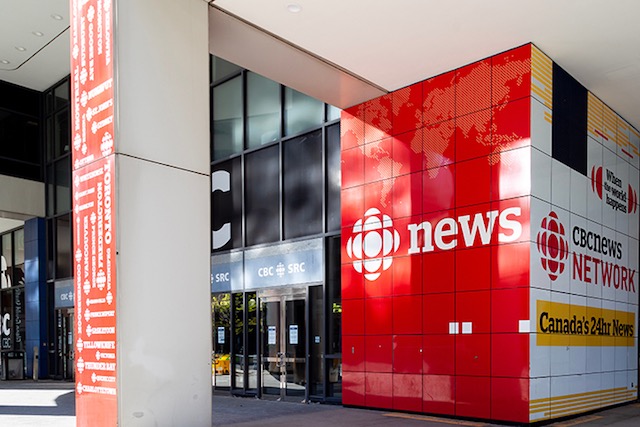
By Jen Hodgson
The Canadian Broadcasting Corporation is using taxpayer money to pad its bureaucracy, while reducing the number of journalists on staff, according to access-to-information records obtained by the Canadian Taxpayers Federation.
“CBC defends its very existence based on its journalism, but its number of journalists are going down while its bureaucracy keeps getting bigger and taxpayer costs keeps going up,” said Franco Terrazzano, CTF Federal Director. “Why does the government keep giving CBC more taxpayer money if barely anyone is watching and its number of journalists keeps going down?”
The CBC employed 745 staff with “journalist” or “reporter” in their job title in 2021. That number dropped to 649 by 2025, the records obtained by the CTF show. Of the 6,100 total employees disclosed by the records, just 11 per cent of CBC staff had “journalist” or “reporter” as their job title in 2025, according to the records.
Even journalist roles such as editors, producers and hosts declined between 2021 and 2025.
While the number of journalists employed by the state broadcaster fell, the number of other bureaucrats grew. The total number of CBC management positions increased to 949 in 2025, up from 935 in 2021.
Bureaucratic roles such as “administrators,” “advisors,” “analysts” and sales staff all increased steadily during the same period.
Management positions saw the steepest growth, with titles like “national director,” “project lead,” “senior manager” and “supervisor” leading the surge.
These trends undermine the CBC’s long-standing claim that its frontline journalism justifies its existence. Despite bureaucratic bloat and fewer journalism positions, the CBC continues to promote its news coverage as a reason it deserves more than $1 billion in annual taxpayer funding.
Separate access-to-information records obtained by the CTF show further proof of CBC’s bloated bureaucracy.
The CBC has more than 250 directors, 450 managers and 780 producers who are paid more than $100,000 per year.
The CBC also employed 130 advisers, 81 analysts, 120 hosts, 80 project leads, 30 lead architects, 25 supervisors, among other positions, who were paid more than $100,000 last year, according to access-to-information records. The CBC redacted the roles for more than 200 employees.
CBC’s CEO Marie-Philippe Bouchard insists the broadcaster is a “precious public asset” that provides “trustworthy news and information.”
CBC’s previous CEO, Catherine Tait, made similar comments throughout her 6.5-year tenure.
“A Canada without the CBC is a Canada without local news [in some places],” Tait said in 2022. If funding were withheld, there would be “fewer journalists to hold decision-makers at all levels to account.”’
“Local news is absolutely at the core of what we do,” Tait said in a 2020 interview. “Canadians are coming to the CBC in numbers like we’ve never seen before.”
However, CBC News Network only accounts for about 1.8 per cent of TV audience share, according to its own data.
Meanwhile, taxpayer funding to CBC will surpass $1.4 billion this year, according to the federal government’s Main Estimates. The broadcaster has spent about $5.4 billion of taxpayers’ money over the last five years, according to the government of Canada.
Prime Minister Mark Carney claimed “our public broadcaster is underfunded” during the federal election. He pledged an initial $150-million annual funding increase and said that number could rise even higher.
CBC paid out $18.4 million in bonuses in 2024 after it eliminated hundreds of jobs. Following backlash from across the political spectrum, CBC ended its bonuses and handed out record high pay raises costing $37.7 million.
“Taxpayers shouldn’t have to pay for an office full of middle managers pretending to be reporters,” Terrazzano said. “The CBC’s own records prove it has fat to cut and if Carney is serious about saving money, he would force CBC to cut its bureaucratic bloat.
“Or better yet, Carney should defund the CBC.”
-

 MAiD1 day ago
MAiD1 day agoDisabled Canadians increasingly under pressure to opt for euthanasia during routine doctor visits
-

 Alberta2 days ago
Alberta2 days agoPetition threatens independent school funding in Alberta
-

 Business2 days ago
Business2 days agoCanada Revenue Agency found a way to hit “Worse Than Rock Bottom”
-

 Digital ID1 day ago
Digital ID1 day agoToronto airport requests approval of ‘digital IDs’ for domestic airport travel
-
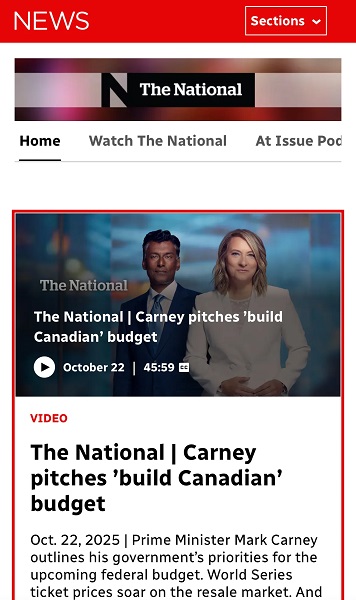
 Media1 day ago
Media1 day agoCarney speech highlights how easily newsrooms are played by politicians
-

 Business2 days ago
Business2 days agoTrans Mountain executive says it’s time to fix the system, expand access, and think like a nation builder
-
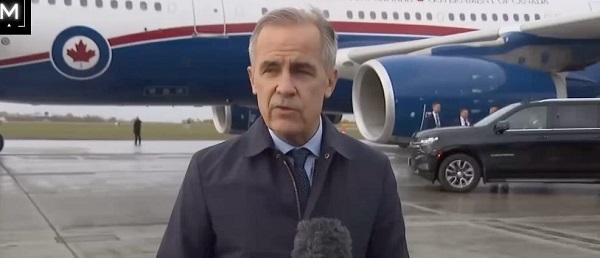
 Opinion1 day ago
Opinion1 day agoCarry-On Carney And The Trials Of Brian Peckford
-
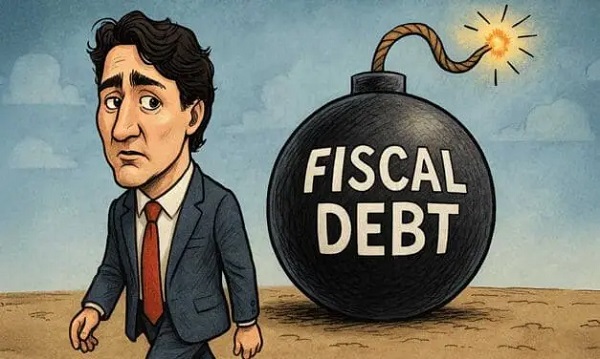
 Business2 days ago
Business2 days agoCanada is still paying the price for Trudeau’s fiscal delusions








